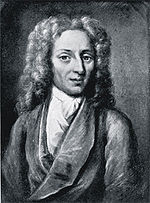Pianist and writer Susan Tomes has just published a new book, Out of Silence, which the Guardian has excerpted here. This story drew my attention:
Afterwards, my husband and I reminisced about our attempts to learn tennis when we were young. I told him that my sisters and I used to go down to the public tennis courts in Portobello. We had probably never seen a professional tennis match; we just knew that tennis was about hitting the ball to and fro across the net. We had a few lessons and became quite good at leisurely rallies, hitting the ball back and forth without any attempt at speed. Sometimes we could keep our rallies going for quite a long time, and I found this enjoyable.
Then our tennis teacher explained that we should now learn to play “properly”. It was only then that I realised we were meant to hit the ball in such a way that the other person could not hit it back. This came as an unpleasant surprise. As soon as we started “playing properly”, our points became extremely short. One person served, the other could not hit it back, and that was the end of the point. It seemed to me that there was skill in hitting the ball so that the other person could hit it back. If they could, the ball would flow, one got to move about and there was not much interruption to the rhythm of play. It struck me that hitting the ball deliberately out of the other person’s reach was unsportsmanlike. When I tell my husband all this, he laughs and says: “There speaks a true chamber musician.”
This story resonated strongly with me. Earlier this year, I had a brief correspondence with mathematician Alexandre Borovik, who has been collecting accounts of childhood experiences of learning mathematics, both from mathematicians and from non-mathematicians. After seeing a discussion on his blog about the roles of puzzles and games in teaching mathematics to children, I had written to him:
Part of my anger & frustration at school was that so much of this subject that I loved, mathematics, was wasted on what I thought was frivolous or immoral applications: frivolous because of all those unrealistic puzzles, and immoral because of the emphasis on competition (Olympiads, chess, card games, gambling, etc). I had (and retain) a profound dislike of competition, and I don’t see why one always had to demonstrate one’s abilities by beating other people, rather than by collaborating with them. I believed that “playing music together”, rather than “playing sport against one another”, was a better metaphor for what I wanted to do in life, and as a mathematician.
Indeed, the macho competitiveness of much of pure mathematics struck me very strongly when I was an undergraduate student: I switched then to mathematical statistics because the teachers and students in that discipline were much less competitive towards one another. For a long time, I thought I was alone in this view, but I have since heard the same story from other people, including some prominent mathematicians. I know one famous category theorist who switched from analysis as a graduate student because the people there were too competitive, while the category theory people were more co-operative.
Perhaps the emphasis on puzzles & tricks is fine for some mathematicians – eg, Paul Erdos seems to have been motivated by puzzles and eager to solve particular problems. However, it is not fine for others — Alexander Grothendieck comes to mind as someone interested in abstract frameworks rather than puzzle-solving. Perhaps the research discipline of pure mathematics needs people of both types. If so, this is even more reason not to eliminate all the top-down thinkers by teaching only using puzzles at school.”
More on the two cultures of mathematics here.
 Nicolas Fatio de Duillier (1664-1753) was a Genevan mathematician and polymath, who for a time in the 1680s and 1690s, was a close friend of Isaac Newton. After coming to London in 1687, he became a
Nicolas Fatio de Duillier (1664-1753) was a Genevan mathematician and polymath, who for a time in the 1680s and 1690s, was a close friend of Isaac Newton. After coming to London in 1687, he became a